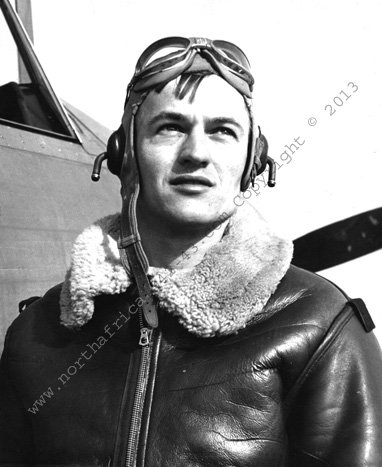








Army Air CorpsColonel Charles DuncanCharles
Wesley Duncan was born October 22nd 1917. He was 94 years old when we
met for our interview on December 27th 2011. Despite his age, he was
sharp and enthusiastic as he spoke about his participation in the
campaign in North Africa. When he became eligible, he and friend Billy
Carpenter pursued government sponsored ground school for flight
training. He applied for 35 hours of training. He passed the
physical and the ground school exam was next. He then attended Virginia
Military Institute and enlisted. After VMI he got orders to go to
Tuscaloosa and joined Class 41-E. He arrived on the 26th of November,
1940 and slept in the post barracks. He and his fellow flight students
were put to work immediately; they were issued flying clothes and
drilled most of the day. July 11, 1941 Charles graduated from advanced
flying school in Selma, Alabama. On July 26th Charles would recall: "We finally arrived at Mitchel Field. Upon arriving I checked in and was told I would be staying at the BOQ, which was close to the Club. The next day I drove around to survey the area. I was thrilled to be there and knew I was really going to enjoy it. After visiting with some of my new classmates I was off to bed where I dreamed about that P-40! The next few days I went to ground school, Spanish classes, lessons on oxygen and its uses and a lengthy class on weather and its dangers. The remaining time I spent sitting in the P-40 studying the instruments. We had to pass a blindfold test and we also had to know all of the other controls. On Aug. 4 I was assigned to the 58th Squadron at Mitchel, by the end of day I was checked out in the P-40 for about an hour. The next day I flew another P-40 and later in the day I went to see a professional ballgame between the Giants and the Dodgers. On August 11, Jim Curl and I took a flight in a basic trainer, which I piloted. As we flew over Jones Beach our engine decided to quit. I lined up to land on the beach; a few people were there so I decided I would have to land in the water. For some reason, call it luck again, the engine restarted and we flew back to Mitchel. For the next few days I continued to fly in either the P-40 or one of the trainers. On Oct 4 we flew our P-40s from Mitchel to Suffolk, which is on the tip of Long Island. I packed my gear as we were heading down to the Southern Pines area. On December the 7th I was at the Officers Club when we got word that the damned Japanese attacked Pearl Harbor". In December-January 1941-42, Charles Duncan was relocated to Bolling Field in Southeast Washington, D.C. 60th Fighter squadron: "We did lots of things there but primarily it was for pilot training; Formation flying, aerial and ground gunnery, and cross country flying to check the ability of a person to navigate and night flying. We also did interception flights. We had three squadrons in the 33rd Group. One was in Norfolk, one in Philadelphia and one at Bolling Field in Washington D.C. On a trip down to Philadelphia I was fortunate that while there I was able to hear Eddie Rickenbacker speak to the squadron and that was a thrill. We had Commanders Sandy McNown, and William W. “Spike” Momyer who was the Operations Officer. Momyer was tough but he had the interest of the Army Air Corp at heart, I will guarantee you that. He wouldn't’t permit anything to be read in the Operation Center except technical orders, which described the P-40 and all its operations". On January 25, 1942 Charles was married and in February of that year he was made Operations Officer of the 60th. In October his group was assigned to the USS Chenango. On October 23rd, 1942 they left dock and started out into the bay. Their destination was North West Africa during Operation Torch: "I had never seen so many ships in my life. They were all over the place. We spent the night in the bay and the next night we took off in one great armada. It was the largest grouping of vessels to have left the United States". 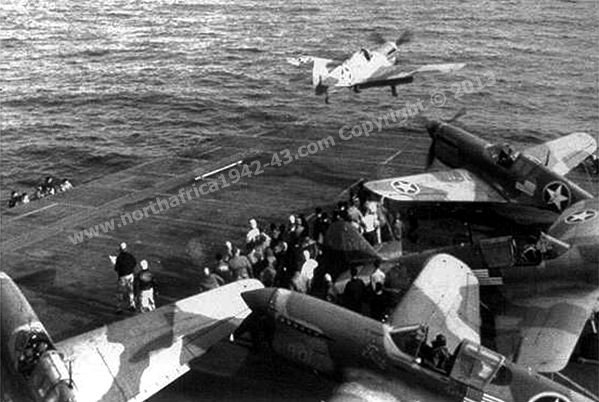 P-40's being loaded onto the USS Chenango during Operation Torch 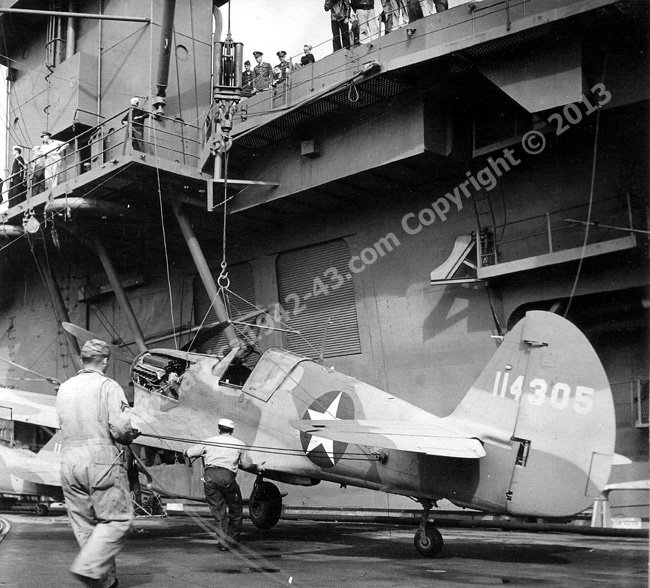 The USS Chenango was part of the Western Task Force Finally in late November, early December 1942, in Tebessa, Algeria, and Telepte, Tunisia, Charles faced the Luftwaffe for the first time. He saw his buddy Hank Norman get shot down by an ME-109. Then on the 10th of January four ME-109's got buddy Dick Coulter who got shot up pretty bad. In Telepte, Tunisia, Charles Duncan recalled: "We went out and strafed all over, we looked for railroad tracks, trains, troops, trucks and were to note where we were fired on by artillery and so forth. We spent quite a while out there and finally began the flight back. I was up with Horse Watkins and he got into it and was shot down, but was able to parachute out. Horse was unable to get out of his parachute. The wind was so strong that he was blown back and forth in this field of rocks and died of a concussion; it was just awful. His wingman, Bent got hit a couple times and lost his prestone. His engine got really hot, almost to the point of blowing up but he made it down safely. I got on the ground because I hadn't been hit and I just felt lucky. However, I turned and looked all around and saw this airplane leaving, it was a Messerschmidt so I took out after him. Well, I knew I wouldn't be able to catch him unless he throttled back, and I was hoping he might in order to save gas. He kept going so I turned around and when I did I saw another one coming straight at me, nose to nose, eyeball to eyeball. When I was young I used to read Warbirds, an airplane magazine. I used to read all that I could get a hold of and I loved the stories. I remembered reading that some of the old guys had said if you ever got yourself nose to nose with another airplane, the one that breaks away first is going to lose. I don’t believe that now and shouldn't have believed it then, but if that German hadn't pulled up over me with a huge flash of yellow from his plane’s belly right over my cockpit we both would have been under the dirt". "We could see before we got to our field that there was a heck of a fight going on. There were 9 JU-88s, medium bombers, escorted by ME-109s dropping bombs on our field and trying to get a few of us. Well, we had an alert flight up of four airplanes and 2 or 3 more took off in the middle of the damn bombing. One was Carmon Boone who lived only 15 miles from my home back in Virginia. I didn't’t know him before, but I knew him during flying school as we went through together. He attacked two of them and shot them both down, he looked around for some more and spotted 2 more flying in formation, he started firing at them and they crashed into one another. He got credit for 4 ME-109s on one flight. Well, the rest of the planes were shot down by our pilots except one and it was shot down by artillery fire close to the front lines. So, they lost all of their bombers! As a result of this performance, the entire 33rd Group (because we were all involved in some manner), was awarded the Presidential Citation Award. It’ll make you shake in your boots sometimes if you just read what is written in the citation. I have included it for you to read, that was some day!" By
April 1943, the Army Air Corps continued to press ahead getting
closer to air superiority. There would be a few more close calls, and
unfortunately a few lost pilots. But the Luftwaffe in North Africa was
seeing it's last days. There was an incident where Major Hubbard
returned to a dog fight to assist in getting a trapped pilot back on
course. In the melee during the confusion, the pilots flew their planes
wildly. The wingman of the leader, named White, lost his bearings,
flew into a building and was killed. Major Duncan would recall: "That
was one of the worst defeats our outfit had experienced during all 13
months. I may be wrong but I’m pretty close. After that long
day of bombing and death, things started to settle down." The group received more new P-40 airplanes which greatly helped maintain their air superiority. The Afrika Korps was being chased by Montgomery from Egypt, Libya and up the coast to Tunisia.
The Germans were extremely crafty in making things difficult as they
withdrew. They pushed the squadron off their field, as well as pushing
them from Sbeitla.
At the same time, the Americans, French and a few Brits
reorganized and pushed Rommel out onto the shore of the Mediterranean. The Afrika Korps were then headed toward Tunis. Things
got dicey March 24th when Colonel Duncan led the 33rd fighter group on
a mission to continue pressure on the Germans. He flew down to assist
another pilot in trouble and made a hit on an Me-109. Colonel Duncan dropped his nose and started firing his
weapons until the Me-109 ran into the ground. It was later
discovered the downed enemy pilot had been hit in the head by a
bullet so he was dead before he crashed. Colonel Duncan recalled: "I
want it to be said that I was not trying to kill that poor fellow, I
was after the machine. I suppose if I had just shot up his wings he
probably could have safely landed but I didn’t like the idea of trying
to kill the pilot; he had a rough enough going as it was." March 29th was just about the time the 9th Division were catching Hell in El Guettar. Colonel Duncan was assigned a top cover mission with 12 airplanes to protect P-40s below. From Duncan's memoirs: "There
were a lot of airplanes in the air that day. Of course Rommel wanted
all the airplanes he could get. At any rate, we even got in a fight
when we started home. Well everybody turned into this circle, a
lufberry, and we took on this group of about the same number as we
had. We had a big scraping and carrying on and they kept getting
up in the sun and coming down on us and that set us up perfect.
Our circle wasn’t perfect, but it didn’t have to be. If you’re in the
general vicinity of where you should be then you’re in good shape. We
were sitting in those positions and couldn’t see them for a while, but
when we saw them they were pretty dang close and they were sitting
right in front of our guns. Boy did we knock them out. We got three of
that bunch and they got smart and left." 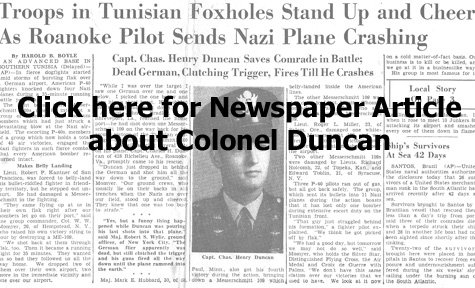 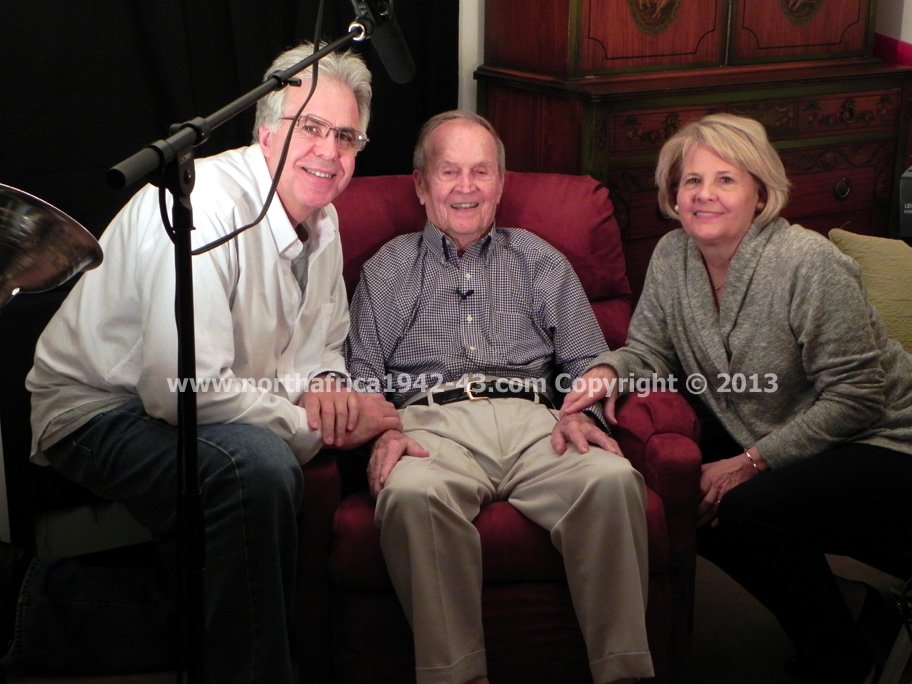 Michael Fraticelli, Colonel Charles Duncan, daughter Debbie - State of Georgia, 12/27/2011 Thank you Colonel Duncan, and thank you Debbie and Jane for making the interview possible. Dick ConlyThe 324th Fighter Group was formed on June 24th 1942, and activated July 6th 1942. Army Air Corps veteran Dick Conly flew in the 315th Fighter Squadron, which was part of the 324th. Most
of his missions were in support of the RAF in North Africa and Italy.
The 324th moved to the Middle East, October–December 1942, for
operations with Ninth Air Force. They trained for several weeks with
P-40 aircraft. While headquarters remained in Egypt, squadrons of the
group began operating with other organizations against the enemy in
Tunisia. Reunited in June 1943, the 324th group engaged primarily in
escort and patrol missions between Tunisia and Sicily until July 1943.
The group received a DUC for action against the enemy from March 1943
to the invasion of Sicily. As
with Colonel Duncan, Dick Conly kept extensive diaries and photographs
of his experiences in the Army Air Corps. In April 1943, he wrote to
his family about his first kill in Tunisia flying his P-40, named "Ping
Pang:" "At
long last we did it, "Ping-Pang" and I got our first victory, in fact
we got two. It's a long story, so settle down and I'll try to tell you
all about it. Yesterday afternoon I went out in a formation and our
flight was top cover for some other 40's that were going to bomb some
shipping. We went out and the first flight had just completed its
dive-bombing run when the sky seemed to be full of Me 109s and Macchi
202s. I know you are acquainted with the 109, but you probably don't
know the 202. The Macchi 202 is Italy's latest pursuit ship and is
supposed to be the hottest thing in this theater. The pilots here rate
it even better man the Focke-Wulf 190. I'm merely telling you this so
you can better see the competition we had. Anyhow, there were suddenly
two Macchis diving on us from the rear. We fly a "box four" formation
and I was number two. I happened to see the Macchi’s first and called
in to Barney, my flight leader. We turned up into them. I took the
first one and Barney took the second. That was the last time I saw my
flight. The Macchi and I came head on at each other and I could see his
wing guns spurting. It scared me for a second, but then my temper came
to my rescue, and I was determined to get the bugger. I squeezed the
trigger and literally poured lead into him. He was about 2,000 feet
above when he had started his dive and now he was in perfect range. I
kept the guns spitting and suddenly he started to belch black smoke,
rolled over on his back in a split S and headed straight down for the
deck. I winged over on his tail and followed him down. I shoved the
throttle to the firewall and everything else I could find, wide open. I
chased him from 10,000 down to 1,000 firing at him all the time. He was
still gong straight down and smoking like hell at 1,000 feet and I
overshot him hitting about 500 miles per hour or better. I had to pull
up and clear my tail, and when I looked again there was a white puddle
in the sea. I didn't actually see him go in and neither did the rest,
they were too busy, so I could only claim a "probably destroyed." Photos from Dick Conly's memoirs 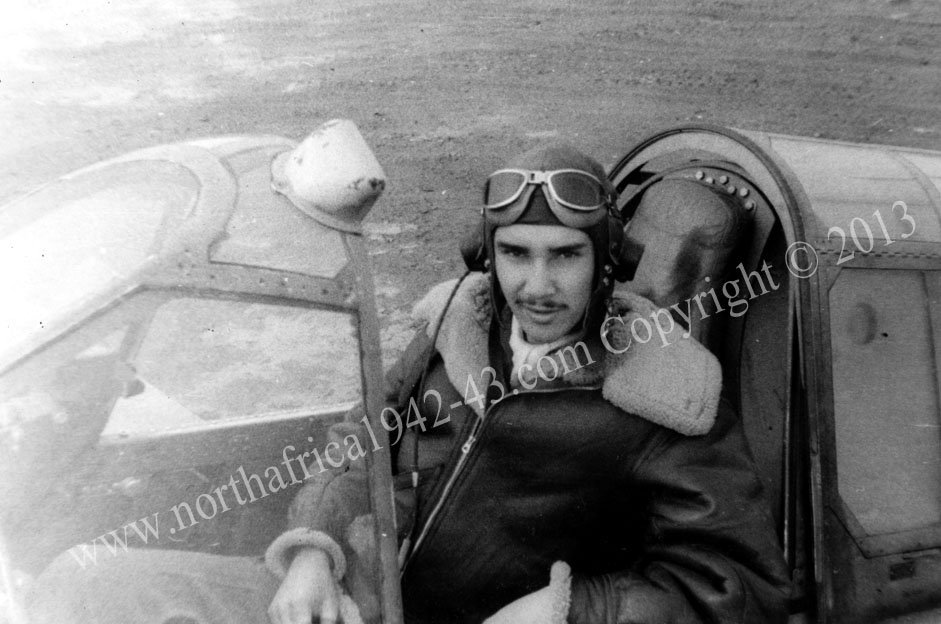 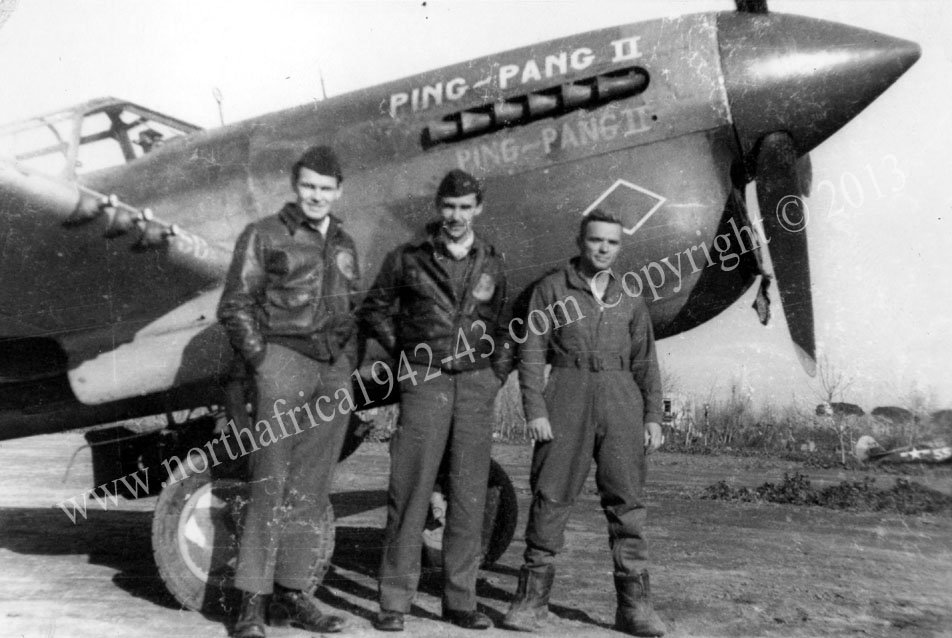 Interview July 2012 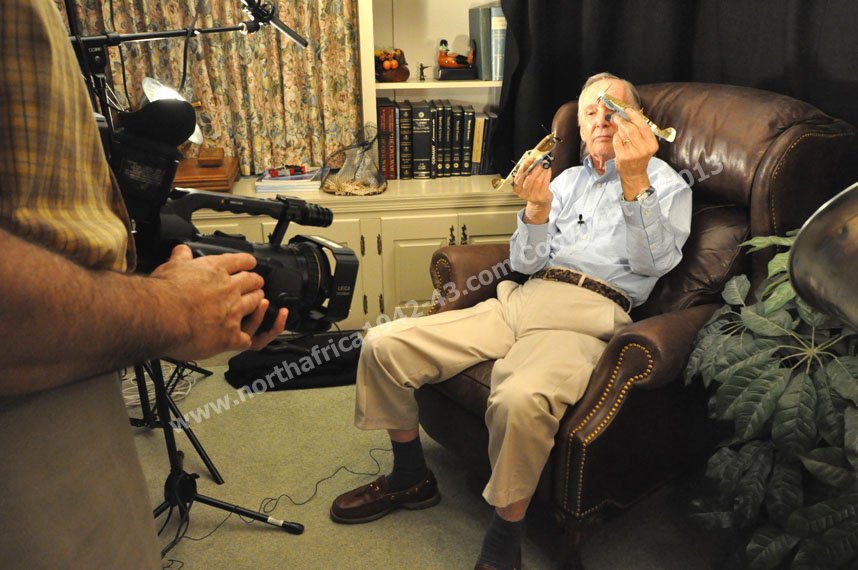 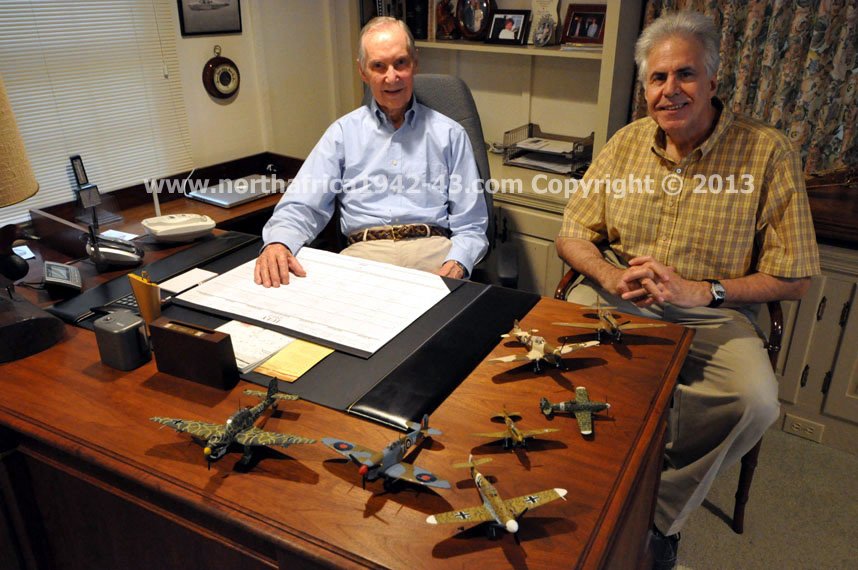 Dick Conly & Michael Fraticelli - State of Pennsylvania, July 2012 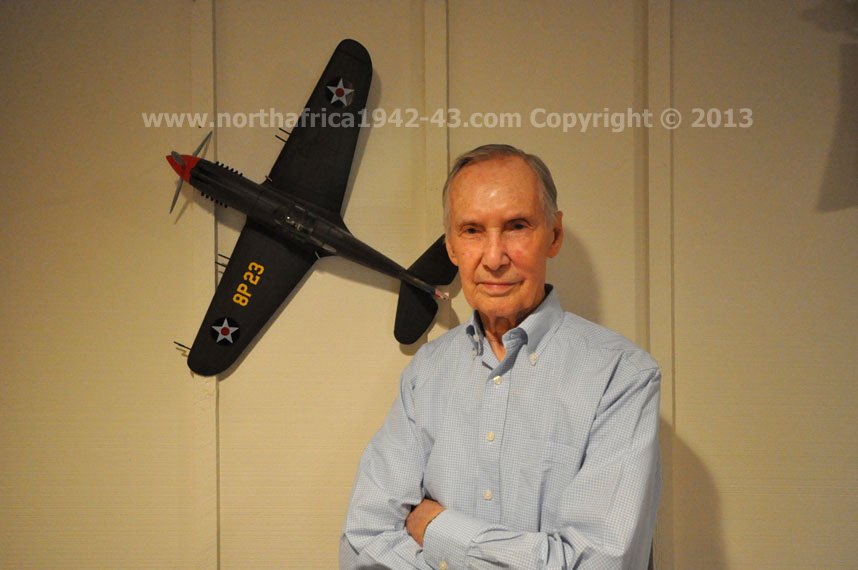 Photos and memorabilia provided by the veterans and their families. This independent documentary is not intended to be a comprehensive account of the war in North Africa 1942-43. The completed film will feature rare interviews from veterans connected to the story. The search to locate veterans within this time frame was very difficult. With no funding and a small film crew who sporadically assisted with re-creations, the bulk of production falls upon one individual. Contributions of any kind are welcomed. northafricaww2survivors@gmail.com Photos, illustrations, art work or interviews may not be reproduced, copied, stored, manipulated or redistributed without the expressed permission of the author. Michael Fraticelli - North Africa 1942-43 Survivors' Stories © 2015 |


